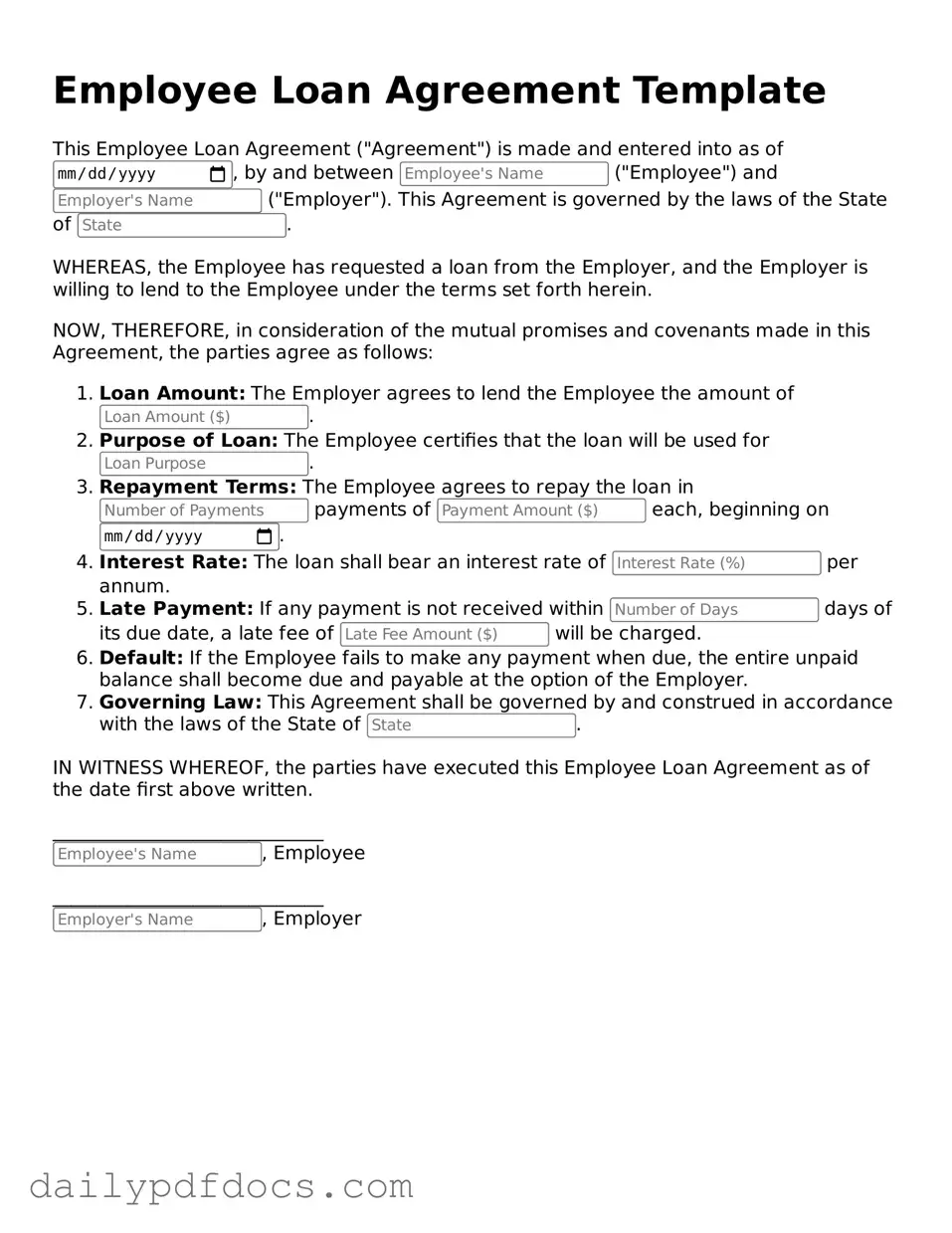What is an Employee Loan Agreement?
An Employee Loan Agreement is a formal document outlining the terms and conditions under which an employer provides a loan to an employee. This agreement helps protect both parties by clearly stating the loan amount, repayment terms, interest rates, and any consequences of defaulting on the loan.
Who can apply for an Employee Loan?
Typically, all employees who meet certain criteria set by the employer can apply for an Employee Loan. These criteria may include length of employment, job performance, and financial need. It’s important to check with your HR department for specific eligibility requirements.
What information is included in the Employee Loan Agreement?
The agreement generally includes the loan amount, interest rate, repayment schedule, and any fees associated with the loan. It may also outline the consequences of late payments and what happens in case of termination of employment.
Is interest charged on the loan?
Interest may or may not be charged, depending on the company’s policy. Some employers offer interest-free loans, while others may charge a nominal interest rate. Always review the agreement carefully to understand the financial implications.
How is the repayment of the loan structured?
Repayment can be structured in various ways. Common methods include payroll deductions, where a portion of your salary is withheld each pay period, or monthly payments. The specific repayment structure will be detailed in the agreement.
What happens if I cannot repay the loan?
If you cannot repay the loan, it is crucial to communicate with your employer as soon as possible. The agreement will outline the consequences, which may include additional fees, salary deductions, or legal action. Open communication can often lead to alternative arrangements.
Can the loan be forgiven?
Loan forgiveness is not common, but some employers may offer it under specific circumstances, such as long-term employment or financial hardship. Check your agreement or consult HR for any forgiveness policies that may apply.
Will taking a loan affect my credit score?
Generally, an Employee Loan does not directly impact your credit score since it is not reported to credit bureaus. However, failure to repay the loan could lead to negative consequences, including potential legal action, which may affect your credit indirectly.
How do I apply for an Employee Loan?
To apply for an Employee Loan, you typically need to fill out an application form provided by your employer. This form may require details about your financial situation and the purpose of the loan. Once submitted, your employer will review your application and inform you of the decision.
Can I take out more than one loan?
Taking out multiple loans may be possible, but it often depends on your employer's policies. Some companies may have limits on the total amount an employee can borrow at any given time. Always consult with HR for guidance on this matter.
